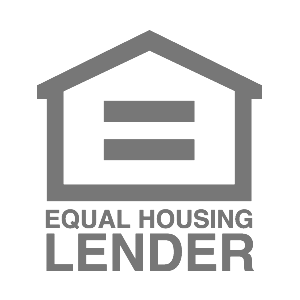
The average American is $90,460 in debt, according to 2019 data from Experian. While this includes all types of debt, including mortgages, student loans, car loans, and credit cards, many Americans feel the pinch between managing their debt and making ends meet.
Paying down your consumer debt can seem intimidating, but there are tested and proven debt payoff strategies that can make the process much easier. The debt snowball and debt avalanche strategies are two methods to help you pay down your debt and lead to financial freedom.
The debt snowball and debt avalanche methods are two different ways to prioritize which debts to pay off first. With both methods, you focus on paying down debts as quickly as possible, but while you stay current on your debts with either method, the difference is how you allocate your payments beyond the minimum required payments to pay down the debt.
While both strategies have their pros and cons, the best approach is the one that works for you. So let’s compare both methods and closely examine how to apply them to pay off your debt.
In This Article
Preparing to pay off debt
Whether you choose to use the debt snowball or debt avalanche method, you must continue to make the minimum payment on each account every month to keep them in good standing and protect your credit.
However, making the minimum payment on your debts, especially credit card debt, isn’t going to get you anywhere quickly. Both debt payoff strategies focus on what you do with any additional funds you commit to paying down your debt above and beyond the minimum payment.
The first step is to make a household budget. This way, you can determine how much you can allocate to paying down debt monthly. Remember, interest accrues on debt each month. Therefore, the more quickly you pay off your debt, the less it costs you in the long run.
Debt snowball
When using the debt snowball method, you pay down the loan with the lowest balance first, then keep moving on to the next largest loan.
The debt snowball method has the benefit of simplicity. First, list the balance of each of your debts. Then sort the list from smallest debt to largest debt. You’ll pay down the smallest debt first, then the next smallest, eliminating debts and moving on to the debt with the next most significant balance.
Pros of the debt snowball method
- By paying down the smallest debts first, you get early wins and motivation to stick with it
- Each debt that gets eliminated is one fewer payment to make, which frees up money to put toward other debts
- You may feel a psychological boost with each account you pay off
Cons of the debt snowball method
- This method is more expensive than the debt avalanche method as it focuses solely on balances and not paying off higher-interest debt first
- It also takes longer than the debt avalanche method since more interest will accumulate
Debt avalanche
The debt avalanche method focuses on paying down the loan with the highest interest rate first. Then, once you pay off the highest-interest loan, you move on to the loan with the second-highest rate.
To exercise the debt avalanche method, list all your debts and the interest rate of each debt. Then sort your list from the highest interest rate to the lowest. You’ll pay down the debt with the highest interest rate first, then pay each debt in order of interest rate.
This saves you money in the long-term on interest, but since it may take a while to pay off the first debt, many consumers may get frustrated and struggle to stay motivated.
Pros of the debt avalanche method
- You’ll save more money in the long run, as you’re paying off the highest-interest rate debts earlier
- You will pay your debt down faster since less interest will accumulate
Cons of the debt avalanche method
- Many consumers may find it more challenging to stay motivated if their highest-interest loans have large balances
Debt snowball vs. debt avalanche: Which method is best?
The debt avalanche is best for most people if you can stick with it. Paying off high-interest loans first means that your overall time to pay off your debt will be lower and less expensive.
However, if your highest interest rates are on loans with high balances, it’s very easy to get discouraged. It takes self-discipline to make the debt avalanche method work.
The debt snowball method provides some psychological gains by paying off accounts earlier in the process.
It all comes down to your personal situation. List your debts with interest rates and balances, and look at which ones you’d pay off first with which methods.
Then assess which strategy will be easiest for you to stick with. The one that works for you is the best option.
Debt consolidation
It may be possible to merge some or all of your debt into a new loan, which would mean fewer payments to make and possibly even a lower interest rate. It simplifies your debt payoff strategy significantly, if you can consolidate all your debts into one payment, or even fewer payments.
A personal loan through Prosper provides predictable payments, competitive interest rates, and easy terms. You can obtain up to $50,000 with a personal loan through Prosper, allowing you to consolidate debt into one monthly payment.
For homeowners, a home equity loan (HELoan) or home equity line of credit (HELOC) uses your home equity as security to get financing at lower interest rates than most unsecured loans. This can allow you to consolidate debt at a lower interest rate than what you’re currently paying, at the risk of using the equity in your home to secure it.
Even consolidating some of your debt can make a big difference. The important thing is to have a plan. The combination of debt consolidation and using a debt payoff strategy like the debt snowball method or debt avalanche method can help you achieve financial freedom and empowerment.
Read more
- What is the Debt Snowball Method?
- How Can You Lower Your Debt-to-Income Ratio?
- The Ultimate Guide to Budgeting and Saving
- Too Much Credit Card Debt? Expert Tips for Paying It Off
- Using a HELOC to Pay Off Your Mortgage
Eligibility for personal loans up to $50,000 depends on the information provided by the applicant in the application form. Eligibility for personal loans is not guaranteed, and requires that a sufficient number of investors commit funds to your account and that you meet credit and other conditions. Refer to Borrower Registration Agreement for details and all terms and conditions. All personal loans made by WebBank.
Eligibility for a home equity loan or HELOC up to the maximum amount shown depends on the information provided in the home equity application. Depending on the lender, loans above $250,000 may require an in-home appraisal and title insurance. Depending on the lender, HELOC borrowers must take an initial draw of the greater of $50,000 or 50% of the total line amount at closing, except in Texas, where the minimum initial draw at closing is $60,000; subsequent HELOC draws are prohibited during the first 90 days following closing; after the first 90 days following closing, subsequent HELOC draws must be $1,000, or more, except in Texas, where the minimum subsequent draw amount is $4,000.
The amount of time it takes to get funds varies. It is measured from the time the lender receives all documents requested from the applicant and depends on the time it takes to verify information provided in the application. The time period calculation to get funds is based on the first 4 months of 2023 loan fundings, assumes the funds are wired, excludes weekends, and excludes the government-mandated disclosure waiting period.
For Texas home equity products through Prosper, funds cannot be used to pay (in part or in full) non-homestead debt at account opening.
Depending on the lender, qualified home equity applicants may borrow up to 80% – 95% of their primary home’s value and up to 80% – 90% of the value of a second home. In Texas, qualified applicants may borrow up to 80% of their home’s value. HELoan applicants may borrow up to 85% of the value of an investment property (not available for HELOCs).
Home equity products through Prosper may not be available in all states.
All home equity products are underwritten and issued by Prosper’s Lending Partners. Please see your agreement for details.
Prosper Marketplace, Inc. NMLS# 111473
Licensing & Disclosures | NMLS Consumer Access
